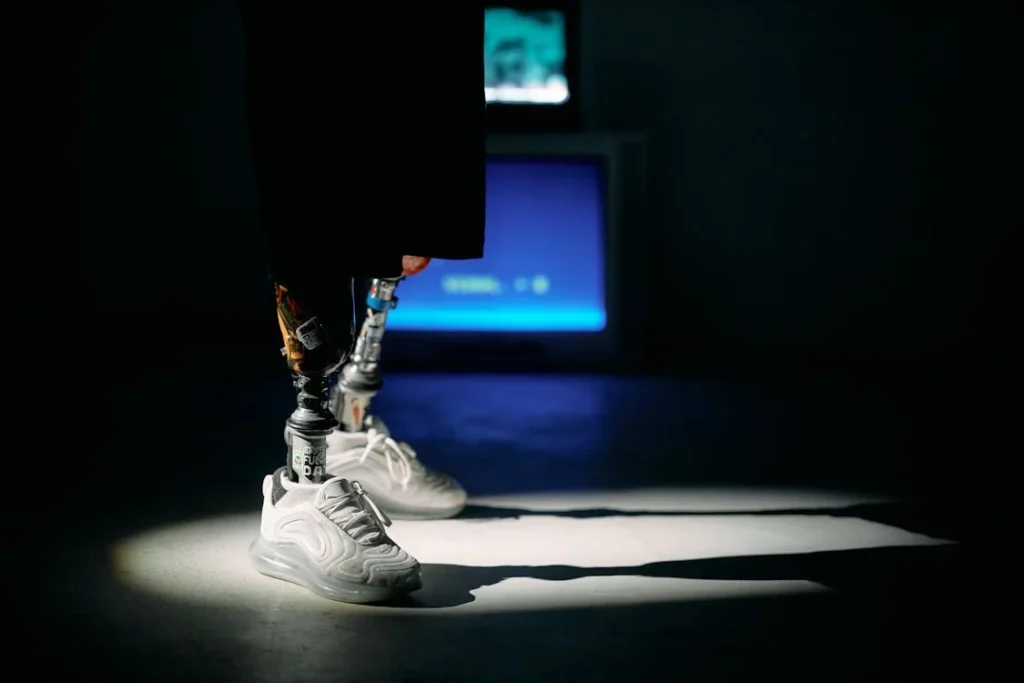Cosmetic prosthetics play an essential role in helping individuals regain confidence and restore a sense of normalcy. Designed to replicate the natural appearance of a limb or other body part, these prosthetics provide aesthetic appeal alongside functionality. However, keeping them looking new requires care and attention. Over time, exposure to the environment, regular use, and even improper handling can cause discoloration, surface wear, or damage.
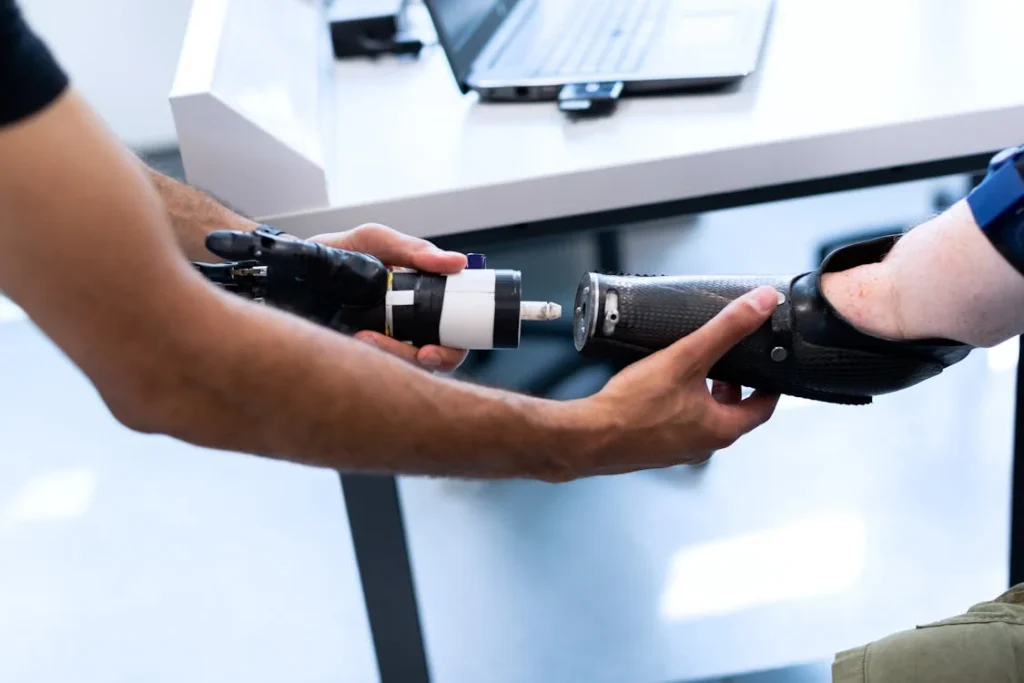
Understanding the Importance of Maintenance
Maintaining a cosmetic prosthetic isn’t just about keeping it looking good; it’s about preserving its functionality and extending its lifespan. Cosmetic prosthetics are made from advanced materials designed to mimic the look and feel of natural skin.
While these materials are durable, they are also sensitive to factors like dirt, oils, and UV exposure. Regular care not only keeps your prosthetic fresh and realistic but also prevents avoidable wear and tear.
How Appearance Affects Confidence
For many users, a cosmetic prosthetic is more than a device—it’s part of their identity. A clean, well-maintained prosthetic can boost self-esteem and make social interactions more comfortable.
Conversely, a worn or discolored prosthetic might draw unwanted attention or lead to self-consciousness. Maintaining the appearance of your prosthetic is an empowering act that supports your confidence and overall well-being.
Enhancing Longevity and Cost Efficiency
A cosmetic prosthetic is an investment, and proper maintenance ensures you get the most value out of it.
Without regular care, small issues such as discoloration or minor surface wear can quickly escalate into larger problems, potentially leading to costly repairs or even replacement.
A well-maintained prosthetic not only lasts longer but also retains its original aesthetic qualities, reducing the need for frequent refinishing services.
Users who adopt a proactive approach to maintenance find themselves spending less on avoidable damage and repairs. For businesses, this reinforces the importance of educating users about care routines during initial consultations.
Offering practical examples of how regular maintenance extends a prosthetic’s lifespan creates a strong connection between good habits and tangible benefits.
Maintaining Realism and Boosting Confidence
The lifelike appearance of a cosmetic prosthetic is one of its most vital features. A clean, well-kept prosthetic ensures that it blends seamlessly into the user’s daily life, enhancing self-confidence in social, professional, and personal settings.
When a prosthetic is neglected, visible wear or discoloration can detract from its realism and draw unnecessary attention, affecting the user’s comfort in public.
Maintaining a prosthetic is about more than cleaning—it’s about preserving its design details. Skin tones, textures, and unique features such as veins or nails require specific care to remain vibrant and intact.
Users should view their maintenance routine as an act of self-care that reinforces their sense of identity and pride. Businesses can further support this mindset by framing maintenance as a critical part of the user experience during consultations or follow-ups.
Preventing Common Issues Before They Arise
Many of the most common problems with cosmetic prosthetics, such as fading, scratches, or moisture-related damage, can be avoided entirely with consistent upkeep.
Dirt and oils, for instance, can accumulate invisibly over time, dulling the prosthetic’s surface or creating an environment for bacterial growth. Small scratches may seem insignificant initially but can worsen if left untreated, affecting both the prosthetic’s appearance and durability.
Preventative maintenance is the most effective way to address these challenges. Establishing a daily cleaning routine ensures that dirt and oils never have the chance to build up, while periodic inspections help users spot early signs of wear.
Businesses can play a key role by providing clear instructions on how to detect and prevent these issues, such as teaching users how to check for fading or demonstrating the proper way to clean high-contact areas.
Aligning Maintenance with Your Lifestyle
A user’s lifestyle significantly influences the type of care their prosthetic needs. Active individuals, for example, may expose their prosthetic to more wear due to frequent movement, outdoor activities, or contact with different surfaces.
Conversely, users who wear their prosthetic for extended periods indoors may face challenges like discoloration from consistent use or exposure to environmental elements like dust.
Tailoring a maintenance routine to fit these specific needs helps ensure the prosthetic remains in top condition. Active users should prioritize protective measures, such as wearing covers during high-impact activities or applying UV-protective sprays for outdoor use.
For users with more sedentary routines, regular cleaning and occasional touch-ups are often enough to preserve the prosthetic’s realism.
Businesses can provide personalized care plans based on the user’s daily habits, demonstrating a deeper understanding of their needs and building long-term trust.
Establishing a Maintenance Partnership
While self-care routines are essential, professional guidance and support elevate prosthetic maintenance to the next level. Regular check-ins with a prosthetist allow for detailed inspections and adjustments that address underlying issues users might miss.
Professionals can also recommend advanced cleaning products, touch-up solutions, or protective accessories tailored to the prosthetic’s materials.
For businesses, positioning maintenance as an ongoing partnership with users creates a stronger relationship. Offering value-added services, such as annual maintenance packages or exclusive access to refinishing services, demonstrates a commitment to their satisfaction.
Including resources like video tutorials, care manuals, or one-on-one maintenance workshops further empowers users to take charge of their prosthetic care with confidence.

Daily Cleaning for Long-Lasting Freshness
Keeping your cosmetic prosthetic clean is the cornerstone of proper maintenance. Daily cleaning removes dirt, sweat, and oils that can accumulate on the surface, preventing discoloration and maintaining its lifelike texture.
Gentle Cleaning Techniques
Always clean your prosthetic with care to avoid damaging its delicate surface. Use a soft cloth or sponge and a mild soap to wipe away impurities.
Avoid scrubbing too hard, as abrasive actions can wear down the outer coating or cause small scratches. Rinse thoroughly with lukewarm water to ensure no soap residue is left behind, as this can lead to dullness or stickiness over time.
Allow your prosthetic to air dry completely before reattaching or storing it. Patting it dry with a lint-free cloth can speed up the process while preventing moisture from building up in hard-to-reach areas.
Understanding the Role of Daily Cleaning
Cosmetic prosthetics are exposed to a range of environmental factors throughout the day, from dust and pollutants to skin oils and sweat.
These substances can cling to the prosthetic, dulling its appearance and creating a breeding ground for bacteria. Over time, even minor neglect can lead to discoloration, odors, or surface degradation.
Cleaning your prosthetic daily addresses these issues before they escalate. It also prevents small amounts of residue from becoming ingrained in the material, which can be more challenging to remove later.
By making daily cleaning a habit, users protect their prosthetic from unnecessary wear, ensuring it continues to look and feel as realistic as possible.
Choosing the Right Cleaning Products
The materials used in cosmetic prosthetics are designed to mimic the look and feel of natural skin, making them sensitive to harsh chemicals or abrasive products. Selecting the right cleaning solutions is critical for maintaining both the appearance and integrity of the prosthetic.
A mild soap or cleanser that is free from dyes and fragrances is ideal for removing dirt without damaging the material. Using products specifically designed for prosthetics provides an added layer of assurance, as these are tested for compatibility with sensitive materials.
It’s important to avoid alcohol-based or acidic cleaners, which can strip the prosthetic’s protective coatings and cause it to dry out or crack over time. Warm water should always be used, as hot water can weaken adhesives or warp certain components.
These simple adjustments in product choice make a significant difference in prolonging the life of the prosthetic.
Mastering the Cleaning Technique
How you clean your cosmetic prosthetic is just as important as the products you use. Gentle handling is essential to prevent unnecessary wear or damage to the surface.
Using a soft cloth or sponge, apply the cleanser evenly over the prosthetic’s surface, paying special attention to areas that come into frequent contact with skin, clothing, or external elements.
Instead of scrubbing, use light, circular motions to lift dirt and oils without damaging the texture or fine details of the prosthetic.
Hard-to-reach areas, such as crevices or around nails, should be cleaned with precision tools like cotton swabs or a soft-bristled brush. These tools allow for a deeper clean without risking surface scratches.
Once cleaned, thoroughly rinse the prosthetic with lukewarm water to ensure no soap residue remains. Soap residue can create a sticky feeling or attract more dirt, which defeats the purpose of cleaning.
Allow the prosthetic to air dry completely before reattaching or storing it. For quicker drying, pat it gently with a lint-free cloth, avoiding aggressive rubbing.
Creating a Seamless Routine
Incorporating daily cleaning into your schedule ensures that it becomes a natural and manageable part of your prosthetic care routine.
Cleaning your prosthetic at the same time each day, such as before bedtime, helps establish consistency and ensures the prosthetic is ready for use the next morning.
For users who may struggle to find the time, setting reminders or preparing cleaning supplies in advance can simplify the process.
Businesses can support users by providing starter care kits that include recommended cleaning products, soft cloths, and easy-to-follow instructions. These kits empower users to begin their maintenance journey with confidence and set the tone for effective, long-term care.
The Impact of Daily Cleaning
Daily cleaning isn’t just about preserving the appearance of a cosmetic prosthetic; it’s also about ensuring a hygienic and comfortable experience for the user.
A clean prosthetic reduces the risk of skin irritation, bacterial growth, or unpleasant odors, especially in warm or humid climates. It also reinforces the user’s connection to their prosthetic, fostering a sense of pride in its upkeep.
By committing to a simple yet effective daily cleaning routine, users can enjoy a prosthetic that looks fresh, feels natural, and provides a consistent boost to their confidence.
For businesses, encouraging and educating users on this habit enhances their overall satisfaction, creating a foundation of trust and long-term loyalty.
Addressing Stains and Discoloration
Stains and discoloration can occur over time, particularly in areas that come into frequent contact with clothing, cosmetics, or environmental elements. Dealing with these issues promptly helps maintain the prosthetic’s realistic appearance.
Targeting Stubborn Stains
For light stains, a mixture of water and a few drops of gentle soap is often sufficient. Use a soft cloth to dab the affected area until the stain lifts. Avoid soaking the prosthetic, as excessive water exposure can weaken some materials.
For more persistent discoloration, consider using a prosthetic-safe cleaner recommended by your provider.
These products are specially formulated to break down tough stains without harming the surface. If you’re unsure which product to use, consult your prosthetist for guidance.
Identifying the Causes of Stains
Understanding the sources of stains is the first step in addressing and preventing them. Many stains result from everyday activities, such as contact with cosmetics, food, or ink.
Additionally, environmental factors like dust, pollution, and UV exposure can gradually alter the prosthetic’s appearance. Areas that come into frequent contact with clothing, such as around seams or edges, are particularly prone to discoloration due to friction and fabric dyes.
Recognizing these patterns allows users to take targeted action. For example, being mindful of exposure to heavily pigmented substances or wearing protective coverings during certain activities can reduce the likelihood of stains.
Businesses can play a vital role by educating users about potential stain risks during consultations or follow-ups.
Immediate Response to Stains
Addressing stains as soon as they occur significantly improves the chances of successful removal. Fresh stains are easier to lift, as they haven’t had time to set into the prosthetic’s material.
Users should act quickly by gently blotting the area with a damp cloth or sponge. Using water alone may suffice for light stains, while a mild soap can help break down more stubborn substances.
It’s important to avoid aggressive scrubbing, as this can spread the stain or damage the surface of the prosthetic. For stains caused by liquids, such as coffee or juice, blotting from the edges toward the center helps contain the affected area and prevent it from spreading.
Businesses can provide users with a step-by-step guide for handling common stains, empowering them to take swift and effective action.
Using Specialized Cleaning Solutions
For stains that prove resistant to basic cleaning methods, specialized cleaning solutions designed for prosthetic materials can be highly effective.
These products are formulated to safely remove stains without compromising the prosthetic’s color, texture, or integrity. It’s crucial to follow the manufacturer’s recommendations for application, as improper use can lead to unintended damage.
Testing the cleaner on a small, inconspicuous area of the prosthetic is a helpful precaution to ensure compatibility. Once confirmed, the cleaner can be applied to the stained area using a soft cloth or applicator.
Gentle circular motions often yield the best results, allowing the solution to lift the stain while protecting the surrounding material.
For businesses, offering prosthetic-safe cleaning products as part of a care package provides users with a convenient and reliable solution for addressing stains.
Demonstrating the use of these products during consultations or workshops further reinforces their value and builds user confidence in managing discoloration.
Restoring Discolored Areas
In cases where discoloration has already occurred, restoration may be necessary to return the prosthetic to its original appearance. Fading or uneven color can result from prolonged UV exposure, repeated contact with harsh chemicals, or neglect of regular cleaning routines.
Addressing discoloration often involves more intensive care, such as refinishing or applying specialized coatings.
Professional refinishing services offered by prosthetists or manufacturers can restore the prosthetic’s original color and texture. These services may involve reapplying pigments, smoothing surfaces, or adding protective layers to enhance durability.
For users who require frequent outdoor exposure, businesses can recommend UV-protective sprays or coatings as a preventative measure to avoid future discoloration.
Preventing Future Stains
Prevention is key to minimizing the occurrence of stains and discoloration. Protective measures, such as wearing sleeves or covers, shield the prosthetic from direct contact with potential staining agents.
For users who frequently use cosmetics or lotions, selecting products that are prosthetic-safe and free from heavy dyes can reduce the risk of residue transfer.
Regular cleaning also plays a pivotal role in prevention. Removing dirt and oils daily prevents these substances from embedding into the prosthetic’s material over time.
For users in high-risk environments, businesses can provide tailored advice on stain prevention strategies that align with their lifestyle and prosthetic usage patterns.
Empowering Users Through Education
Addressing stains and discoloration is as much about prevention as it is about effective response. By equipping users with knowledge, tools, and resources, businesses can help them maintain the appearance of their prosthetic with confidence.
Providing visual guides, hosting care workshops, or offering on-demand support through digital channels reinforces this education and strengthens the user experience.
For users, knowing how to tackle stains promptly and effectively eliminates the stress of accidental spills or exposure to staining agents. Businesses that prioritize this aspect of care create a positive, supportive relationship that encourages long-term satisfaction and trust.
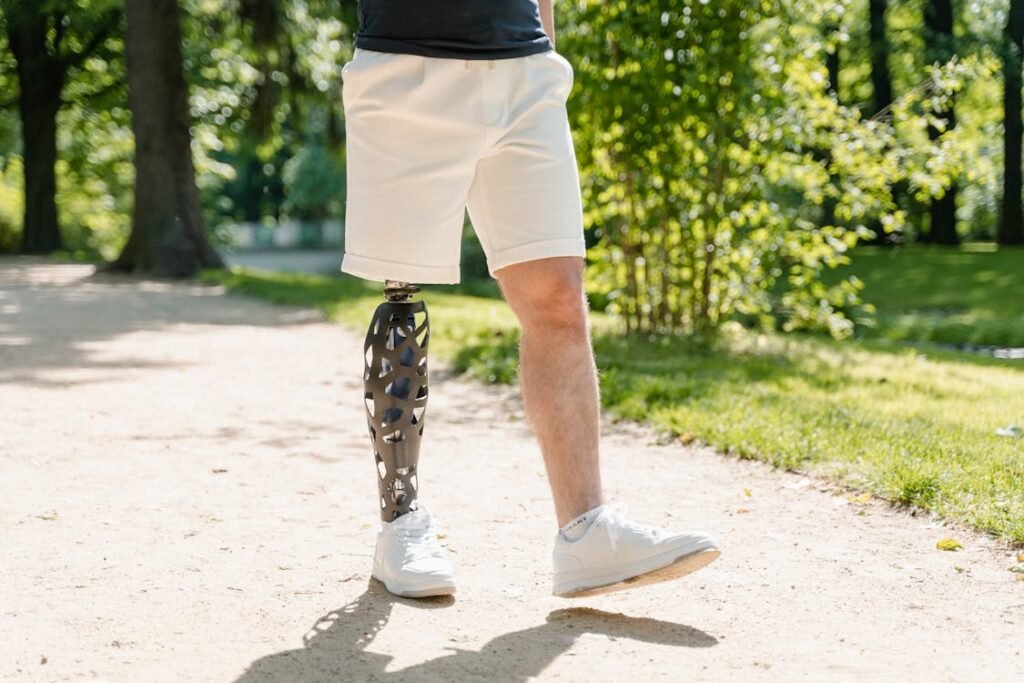
Protecting Against Environmental Damage
Environmental factors like sunlight, humidity, and pollution can significantly impact the appearance of cosmetic prosthetics. Over time, these elements may cause fading, dullness, or cracking, especially if the prosthetic is frequently exposed to outdoor conditions.
Shielding from UV Rays
UV exposure is a leading cause of fading in prosthetics. Even brief periods in direct sunlight can gradually alter the color, making it appear less natural.
To prevent this, apply a UV-protective spray designed for prosthetic materials. Wearing protective clothing or using accessories like sleeves can also reduce sun exposure.
Managing Humidity and Moisture
High humidity can affect both the appearance and feel of a prosthetic, making it sticky or prone to bacterial growth. Ensure the prosthetic is stored in a cool, dry place when not in use.
Using silica gel packets in your storage container can help absorb excess moisture and keep the prosthetic in optimal condition.
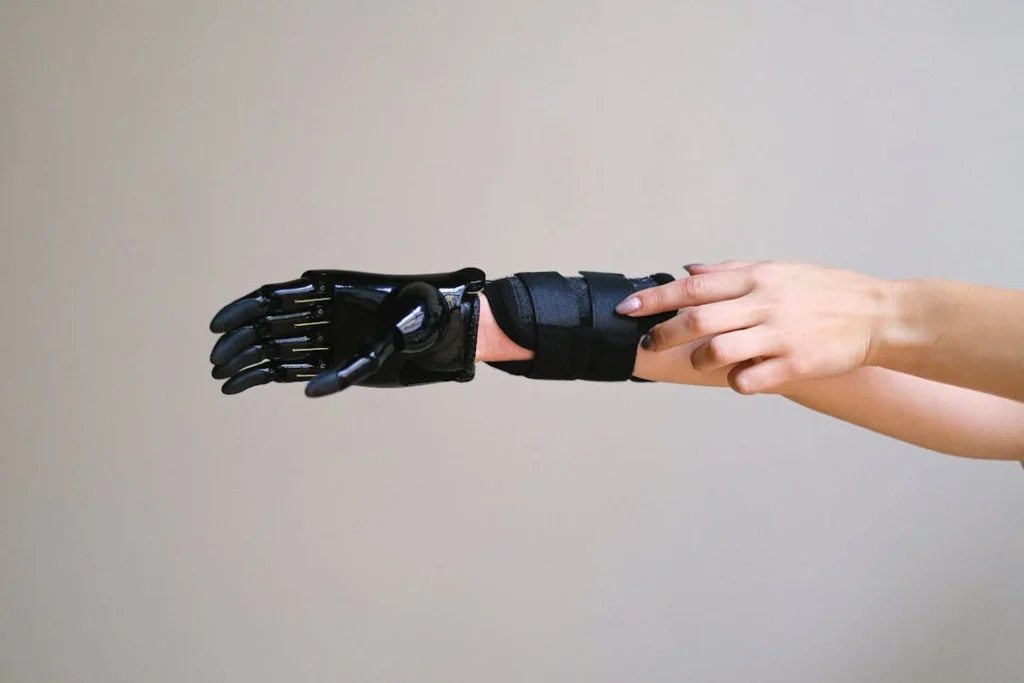
Handling Surface Wear and Minor Damage
Cosmetic prosthetics are designed to withstand regular use, but over time, surface wear can occur. Small scratches, scuffs, or dull patches may appear, especially on high-contact areas. Addressing these issues promptly can keep the prosthetic looking fresh and lifelike.
Smoothing Out Scratches
For minor scratches or scuffs, a prosthetic-safe polish or touch-up cream can be applied to the surface. These products help restore the smooth finish and reduce the visibility of imperfections.
Always test any product on a small, inconspicuous area first to ensure compatibility with your prosthetic’s material.
If the damage is more extensive, consult your prosthetist. They may offer professional resurfacing services that can restore the prosthetic to its original appearance.
Preventing Future Wear
To minimize surface wear, handle your prosthetic gently during application and removal. Avoid dragging the prosthetic against rough surfaces or wearing it during activities that may expose it to harsh conditions.
Using protective coverings or sleeves can provide an extra layer of defense against everyday wear and tear.
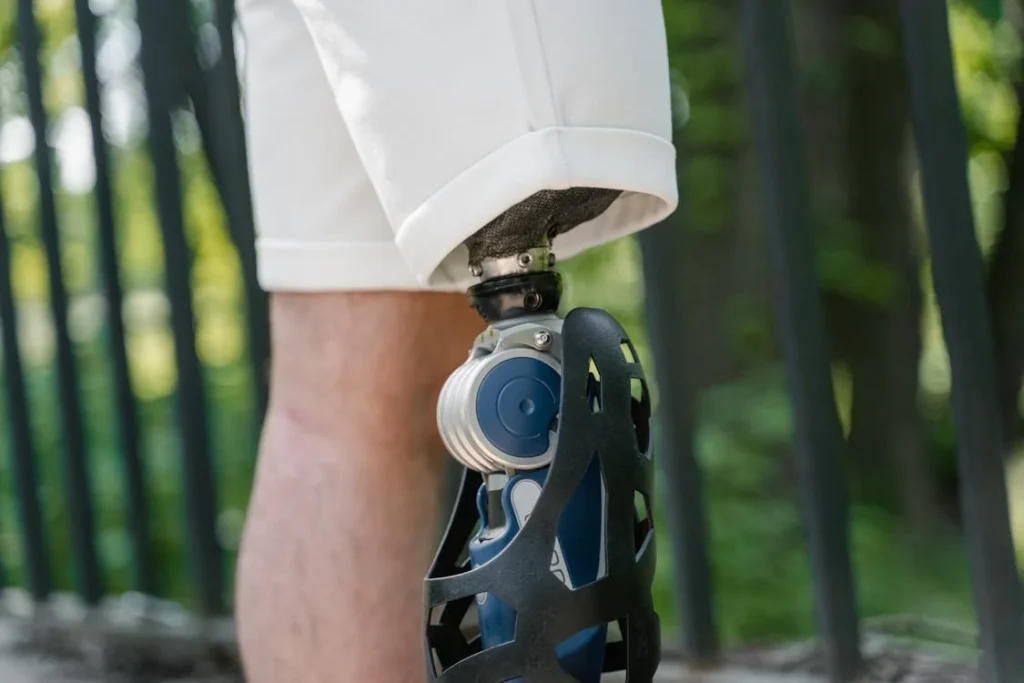
Keeping the Prosthetic Secure and Comfortable
The fit and attachment method of your cosmetic prosthetic play a significant role in its appearance. A secure fit ensures that the prosthetic looks natural and moves seamlessly with your body, while improper attachment can lead to visible gaps or misalignment.
Ensuring a Proper Fit
Regularly check the fit of your prosthetic, as changes in weight or limb size can affect how it sits on your body. If the prosthetic feels loose or tight, adjustments may be needed.
Liners or additional padding can often resolve minor fit issues, but a professional refit may be necessary for significant changes.
When attaching the prosthetic, ensure that any adhesives or straps are applied evenly to avoid uneven pressure or gaps. Cleaning the contact points before attachment can improve adhesion and prevent slipping.
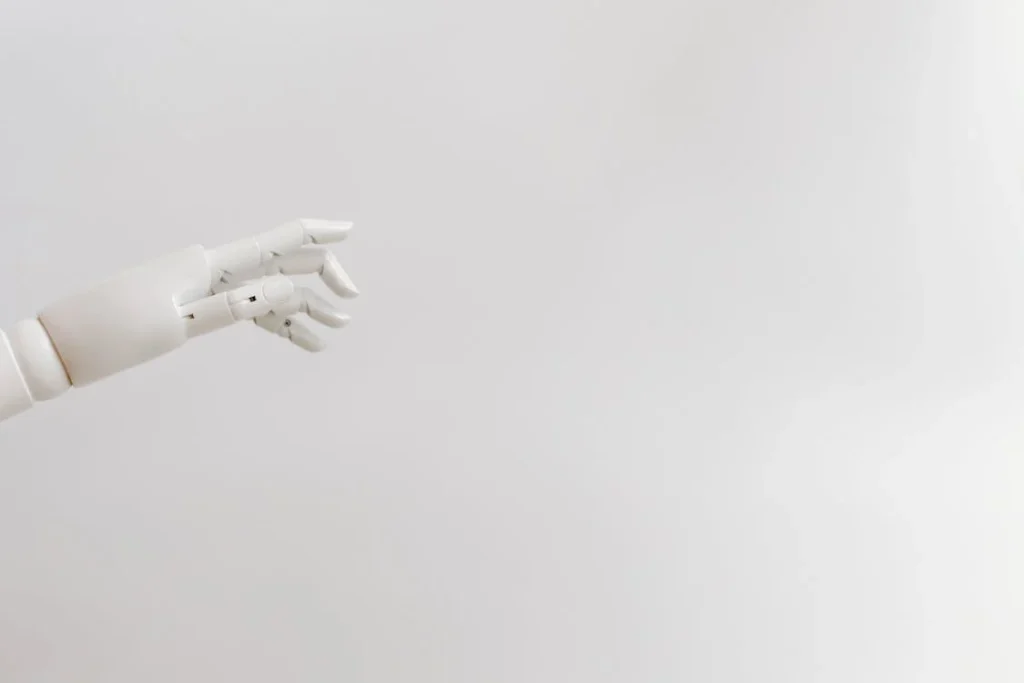
Storing Your Prosthetic Safely
Proper storage is vital to maintaining the appearance and condition of a cosmetic prosthetic. When not in use, incorrect storage can lead to warping, discoloration, or damage.
Ideal Storage Practices
Always store your prosthetic in a cool, dry place away from direct sunlight and extreme temperatures. Using a soft, padded storage case can prevent scratches or dents during storage or travel.
Ensure that the prosthetic is clean and completely dry before storing it to avoid mold or mildew growth.
For prosthetics with delicate features or custom designs, consider using a support stand or frame. This helps the prosthetic maintain its shape and prevents unnecessary stress on certain areas.

Extending the Life of Your Prosthetic
Proper maintenance extends the life of a cosmetic prosthetic, saving both time and money while maintaining its aesthetic value. Beyond cleaning and storage, regular professional check-ups are essential to keep the prosthetic in top condition.
Scheduling Routine Inspections
Even with diligent care, professional inspections can catch subtle issues that may not be immediately noticeable. Prosthetists can assess the condition of the prosthetic, make adjustments, and recommend additional care techniques based on your lifestyle and usage patterns.
By addressing small problems early, you can prevent them from escalating into costly repairs or replacements. Many prosthetic providers, including Robobionics, offer maintenance packages or annual check-ups to ensure your prosthetic remains in peak condition.
Conclusion
Cosmetic prosthetics are more than functional devices—they are extensions of who you are. By prioritizing regular maintenance, gentle cleaning, and proactive care, you can preserve their lifelike appearance and ensure they remain an integral part of your daily life.
With a thoughtful approach to care, supported by professional guidance, your cosmetic prosthetic can continue to look vibrant and natural for years to come. At Robobionics, we’re committed to helping you achieve this.
Need personalized advice or professional maintenance? Contact Robobionics today to discover expert solutions tailored to your needs.



